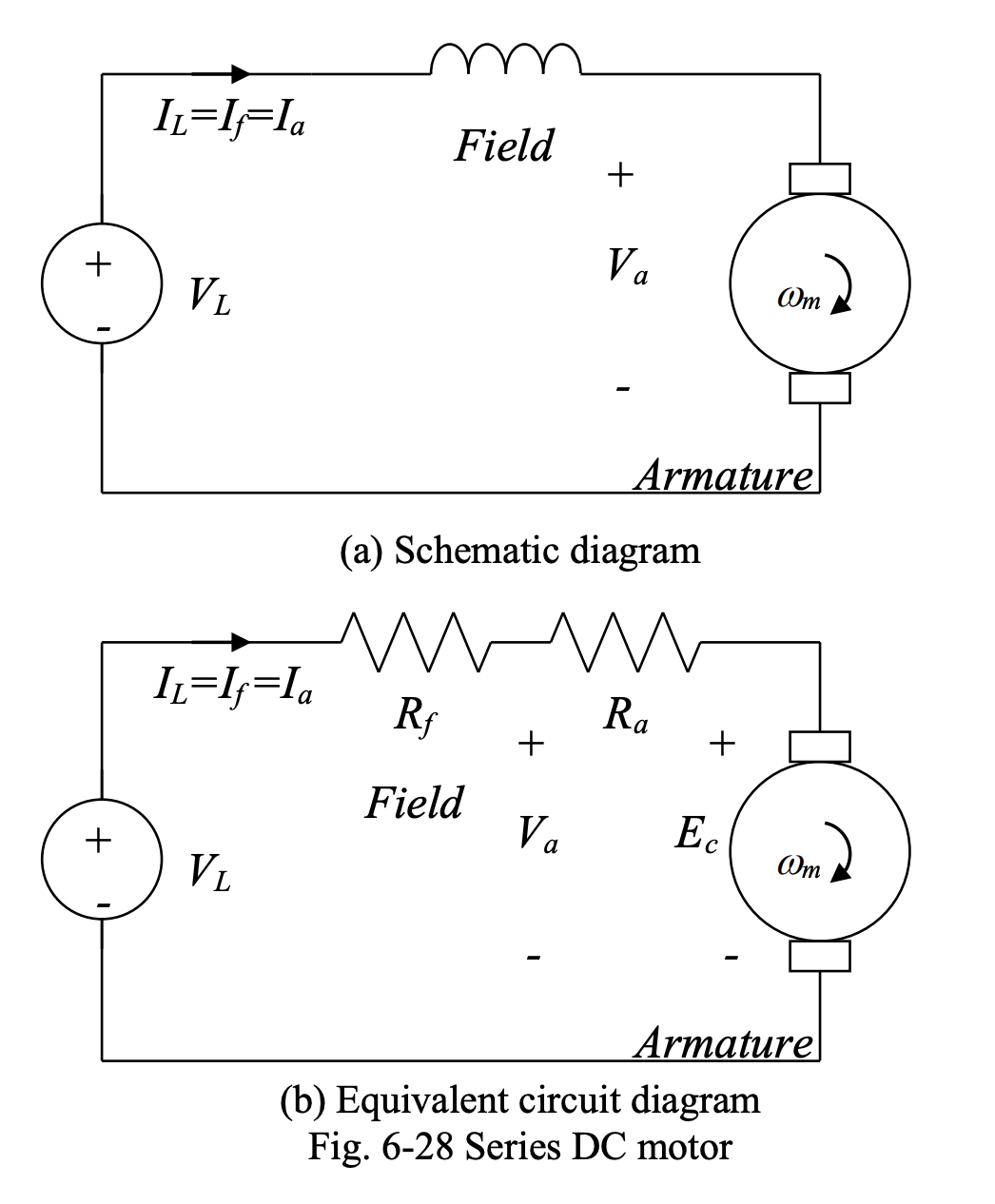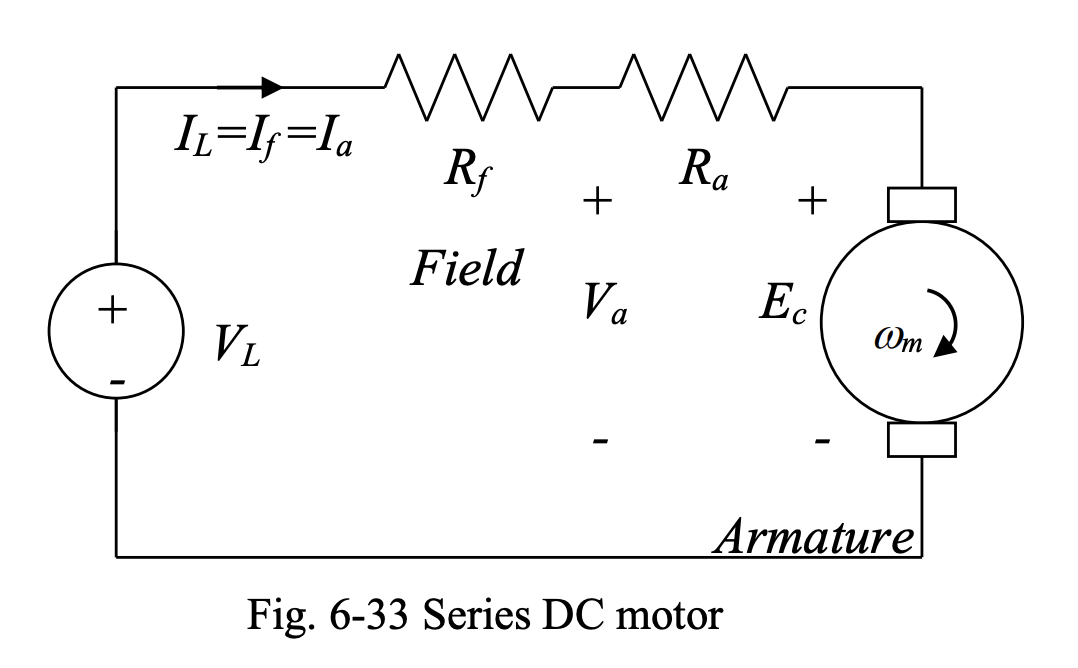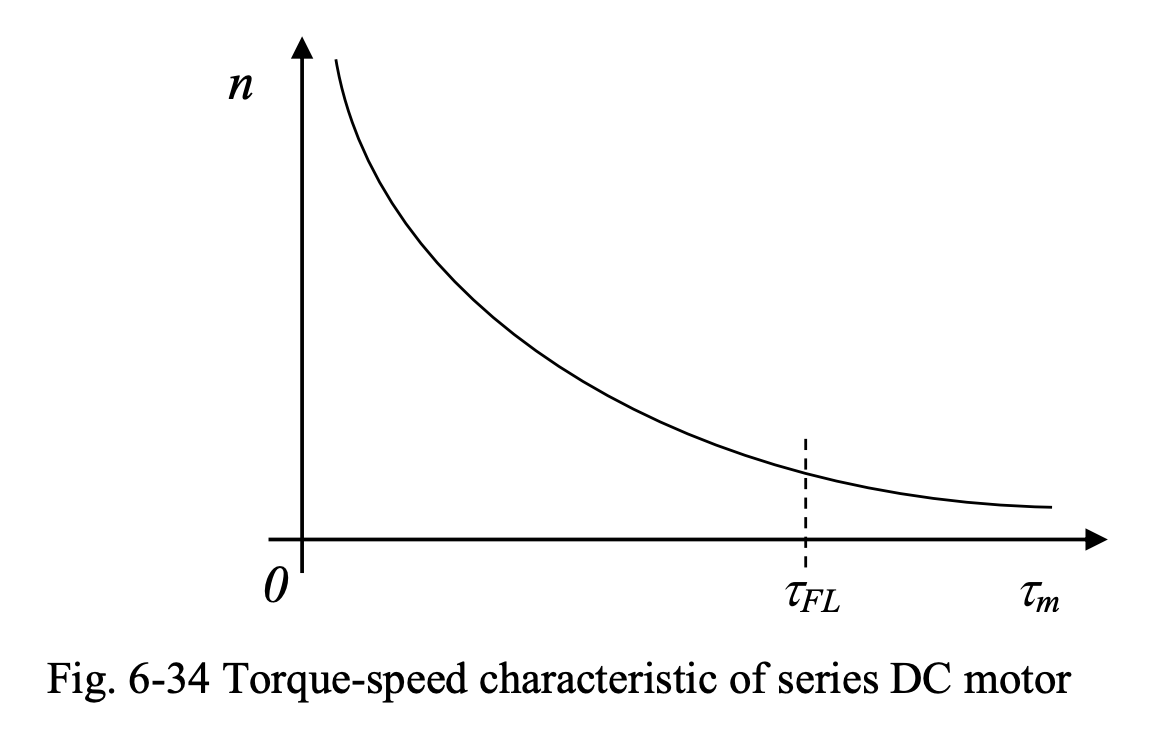Below we have the schematic diagram of a series DC motor and its equivalent circuit diagram.

In series DC motors, the field circuit is connected in series with the armature circuit. The main relations for series DC motor are:
where is the number of turns of field winding and is the magnetic reluctance.
Then:
Thus, we have , and .
Speed-Torque Characteristic
Below we have the equivalent circuit of a series DC motor.

In a series DC motor, assuming field flux is proportional to field current:
We then have:
This means that the developed torque is proportional to the square of the armature current.
Looking at the equivalent circuit, using KVL, we can write
We can derive current in terms of torque by re-arranging our previous expression to get
Also, we know that
Therefore:
Since we have:
Solving for , we have:
As a result, our expression for becomes:
Solving for speed :
This results in the following plot:

This shows that the speed of a series DC motor is strongly load dependent. At no load, the speed is dangerously high. This implies that a series DC motor should never be started without any load on the shaft.
As the load is increased, the speed will drop rapidly. Series DC motor is a variable-speed DC motor, with a wide range of variations of speed from no load to full load. Also, one can see from that series DC motor has a high starting torque. Due to this characteristic, series DC motors are used in applications such as hoisting, where a high starting torque is required.